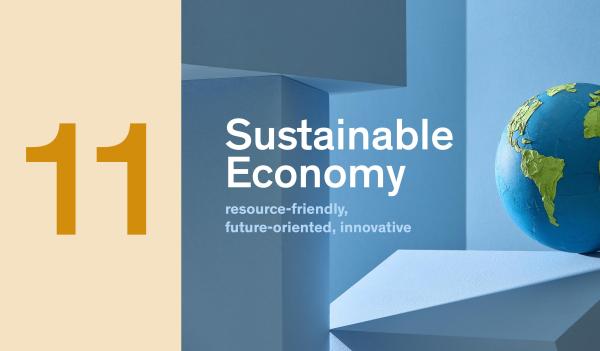Extending the lifespan of mobile devices
The production of mobile internet-enabled devices (MIED) causes considerable environmental impacts. Using these devices longer is key to lowering their negative impacts. Our project LIFESAVING explores which approaches to longer use of MIEDs are effective from an environmental perspective, and attractive for consumers as well as for market actors.

Background
Existing studies have focussed on isolated measures and perspectives to extend the service life of MIEDs. What is lacking, is an in-depth understanding of consumers’ relevant decisions that occur throughout the lifetime of a device. LIFESAVING sets out to better understand the potential of different approaches for shaping an environment conducive to consumer decisions that contribute to retention and recirculation of MIEDs in Switzerland. It combines three complementary perspectives: an environmental perspective, a consumer perspective, and a socio-economic perspective.
Aims
The goals of this project were to provide evidence-based recommendations and ideas to Swiss actors that can contribute to a longer use of MIEDs in Switzerland. Specifically, for different measures we aimed to provide a more detailed understanding of (i) their direct and indirect environmental impacts, (ii) their attractivness for consumers and (iii) their potential to be implemented by actors in Switzerland.
Results
Largest impacts of MIEDs occur in the production phase
Through a meta-analysis, we developed a more accurate and up-to date life cycle inventory for MIEDs as well as a framework to estimate their direct and indirect impacts. Even though there is considerable variance between different devices and impact categories, we find that the overwhelming majority (60-80%) of impacts over the lifetime of MIEDs occur in their production phase, specifically in the manufacturing of their integrated circuits (chips). This implies that any measure leading to a considerable extension of a devices’ service is environmentally beneficial, even considering induction (e.g. emissions coming from a new battery or display in a repair scenario) and re-spending effects (e.g. additional consumption using the money saved by delaying the purchase decision of a device).
Consumers are willing to buy second-hand devices
From a consumer perspective, we find that there is considerable and yet untapped demand for refurbished devices and a potential to grow the secondary market for MIEDs. For example, in a series of online experiments we found that employing simple nudges (placement of refurbished phones in an online shop or providing consumers with informational clues) and environmental framings can increase the share of consumers willing to buy a refurbished phone considerably.
Policy frameworks and support needed to promote longer use of MIEDS
Finally, when we look at the overall market for MIEDs in Switzerland, we see a number of positive trends, such as a slight increase in the average service times of MIEDs and more retailers offering used and/or refurbished phones. However, this secondary market is still niche and comprises a variety of disconnected actors. Implementing effective measures to promote the longer use of MIEDs is therefore challenging, as industry standards or consumer labels are not consistent across different retailers. To that end, better coordination and alignment of the different actors and their interests are needed. This could be facilitated by an adequate policy framework as well as support by authorities.
Implication for research
Apart from the individual empirical contributions of our different studies to the body of scientific research, the main contribution of LIFESAVING is that it provides a comprehensive overview of mechanisms that contribute to a longer service time of MIEDs. This can happen either via retention (longer use by the same consumer) or recirculation (passing on a device to a different user). Our research also provides an improved overview of the roles different actors (can) take to shape an environment that is conducive to longer service lifetimes of MIEDs.
Implication for practice
From an implementation perspective, the project makes two major contributions. First, it clearly and unambiguously demonstrates that service life extension is key to reducing the environmental impacts of MIEDs. Second, it provides clear empirical evidence that the secondary market for used mobile devices has potential that remains largely untapped. Realising this potential requires collaboration and standardisation between key actors, including lawmakers, retailers, refurbishers and NGOs.
Publications
Project leaders
Dr. Yann Blumer
Institut für Innovation und Entrepreneurship, Zürcher Hochschule für Angewandte Wissenschaften ZHAW
Prof. Dr. Lorenz Hilty
Institut für Informatik, Universität Zürich
Matthias Stucki
Institut für Umwelt und Natürliche Ressourcen, Zürcher Hochschule für Angewandte Wissenschaften ZHAW
Project partners
Revendo
Swisscom
Thingsy



